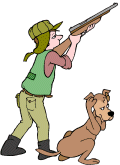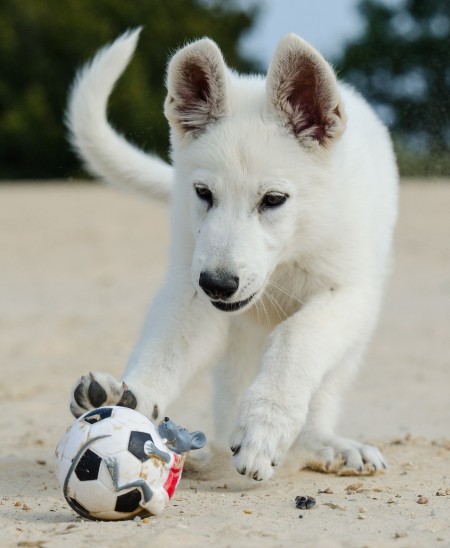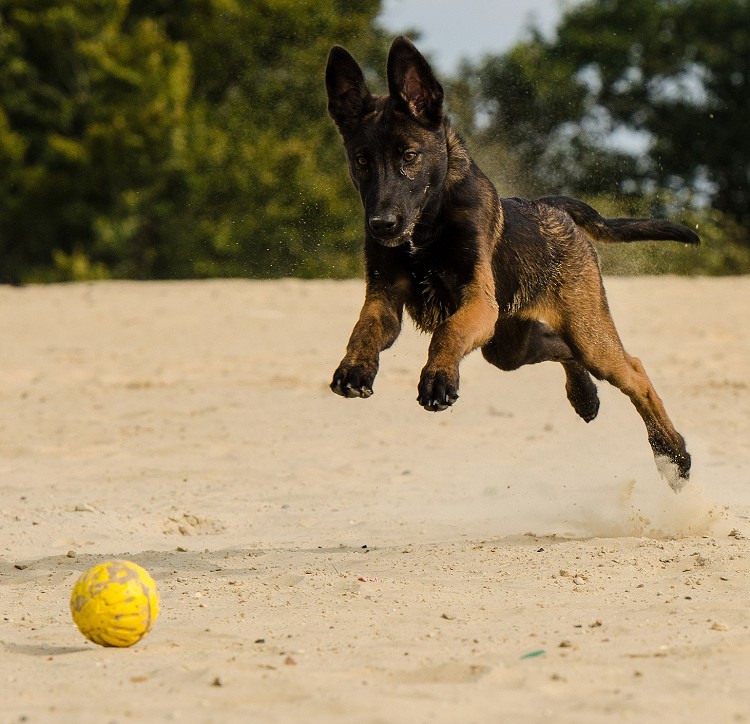Teach your dog to play fetch (retrieve)
By Michele Welton, Dog Trainer, Breed Selection Consultant, Author of 15 Dog Books
Many pups love chasing a ball or a thrown toy. Some will even bring the object back so you can throw it again. Retrieving (fetch) is an awesome game to play with your dog. It's an interactive and cooperative game that really improves your relationship.
Important: Retrieving is a game. Retrieving is not an essential lesson like "Come" or "Quiet." We don't use corrections for games, even if the dog isn't learning the way we wished he was. Keep games cheerful and upbeat so the pup is eager to play.
 The good news is that some dogs are natural retrievers.
The good news is that some dogs are natural retrievers.
- Sporting (bird dog) breeds, such as retrievers and spaniels, are often natural retrievers because they were bred to fetch shot birds back to the hunter.
- Herding breeds, such as shepherds, collies, shelties, corgis, etc. are often natural retrievers. They were bred to chase and gather livestock, so it's easy to extend those chasing/gathering instincts to thrown objects.
- And a few other breeds, such as Poodles, Papillons, Dachshunds, Jack Russell Terriers, Fox Terriers, and Boston Terriers, seem to be "hardwired" with the desire to chase balls and toys and bring them back to you.

The bad news is that most breeds are NOT natural retrievers.
Here's an example of how difficult retrieving is for so many dogs. In obedience competition, many dogs succeed at the novice level. But far fewer succeed at the intermediate and advanced levels. Why? Because at the higher levels, dogs must retrieve. That single requirement knocks out a whole lotta dogs!
So if you have a pup who won't retrieve, don't feel alone. You can try to teach him, but don't be disappointed if it doesn't go as smoothly as you would like.
Retrieving down a hallway
Do you have a long narrow hallway in your house? Close all the doors along it so that as your dog runs down the hallway, he can't duck into any side rooms. If a room doesn't have a door, block it off with boxes or some other barrier.
Get your pup excited about his favorite ball or toy, then toss it down the hall. Encourage him, "Fetch!" or "Get it!"
If your pup runs after his thrown toy, if he picks it up, and – miracle of miracles – if he brings it back to you, tell him happily, "Good! Give." Then immediately throw it again. You want him to learn that bringing a thrown object back to you causes it to immediately fly again. (Of course, you will need to stop some time!)
There.... wasn't that easy?
Probably not! There are a number of things that can go wrong...
Fetch problem #1
Suppose your dog brings the toy back to you, but dances out of reach or refuses to give it up. With this kind of pup, don't play fetch without first attaching his leash. Then if he tries to play keep-away, you can step on the dragging end of the leash as you continue to encourage him to come all the way to you.
Fetch problem #2
It's very common for a dog to chase the ball and pick it up.... but then just stand there looking at you without bringing it back.
Crouch down to make yourself more interesting and inviting. Pat your hands together or pat your hands against your thighs in an encouraging manner.
If he takes a step or two toward you, praise him. "Gooood! Bring it here!" You want him to connect praise and "Bring it here" with the action of heading toward you with something in his mouth.
Don't expect perfection. It's okay if he brings it a little way, then drops it. Just walk over and get it. Then toss it again. Hopefully he will improve with experience, especially if you actively look for opportunities to encourage the pup to "Bring it here" when he happens to be standing anywhere with a toy in his mouth.
Fetch problem #3
Suppose your pup doesn't show any interest in chasing the ball. Or perhaps he chases it but won't pick it up. Okay. Try the next game, which is....
Retrieving into a corner
Take your dog into a room with an accessible corner where you can kneel a few feet away from the corner, but facing into the corner.
You're going to toss the ball or toy gently into the corner so that it bounces off one of the walls and back to you.
Some dogs who won't chase a ball down a long straight hallway become more enthusiastic when the ball is tossed only a few feet and unexpectedly bounces back. You're trying to stimulate any chasing instincts your pup might have.
Some dogs will begin by chasing the ball but not picking it up. Only later will they begin picking it up, and still later they might begin moving in your direction to return it to you. It's a process, so be patient and encouraging.

Retrieving outdoors
Occasionally a dog who won't retrieve indoors will be more enthusiastic outdoors, so give that a try.
If your pup has learned to come when called 100% of the time, he shouldn't need a leash. If he hasn't learned Come, he should have a leash or cord attached to his (buckle) collar and dragging.
How long should the leash be? With a dog who stays pretty close to you, or if your yard is very small, a 6-foot leash is fine. With more adventurous pups who might grab the ball and take off, especially in a large yard, a 15- or 20-foot leash is easier for you to step on and stop his flight. Then you can gently reel him in to continue the game.
Retrieving on command
If you're hoping to compete with your dog in a sport that requires retrieving, or if you simply want a dog who will retrieve reliably, the game does need to become a command. There are several good systematic methods for teaching a reliable retrieve, but that's beyond the scope of this article.
My best-selling books – now available FREE on my website
 Respect Training For Puppies: 30 seconds to a calm, polite, well-behaved puppy is for puppies 2 to 18 months old. Your puppy will learn the 21 skills that all family dogs need to know. Click here to read for free.
Respect Training For Puppies: 30 seconds to a calm, polite, well-behaved puppy is for puppies 2 to 18 months old. Your puppy will learn the 21 skills that all family dogs need to know. Click here to read for free. Teach Your Dog 100 English Words is a unique Vocabulary and Respect Training Program that will teach your adult dog to listen to you and do what you say. Click here to read for free.
Teach Your Dog 100 English Words is a unique Vocabulary and Respect Training Program that will teach your adult dog to listen to you and do what you say. Click here to read for free. 11 Things You Must Do Right To Keep Your Dog Healthy and Happy helps your dog live a longer, healthier life. Get my honest advice about all 11 Things before you bring home your new puppy, because some mistakes with early health care cannot be undone. Click here to read for free.
11 Things You Must Do Right To Keep Your Dog Healthy and Happy helps your dog live a longer, healthier life. Get my honest advice about all 11 Things before you bring home your new puppy, because some mistakes with early health care cannot be undone. Click here to read for free.
